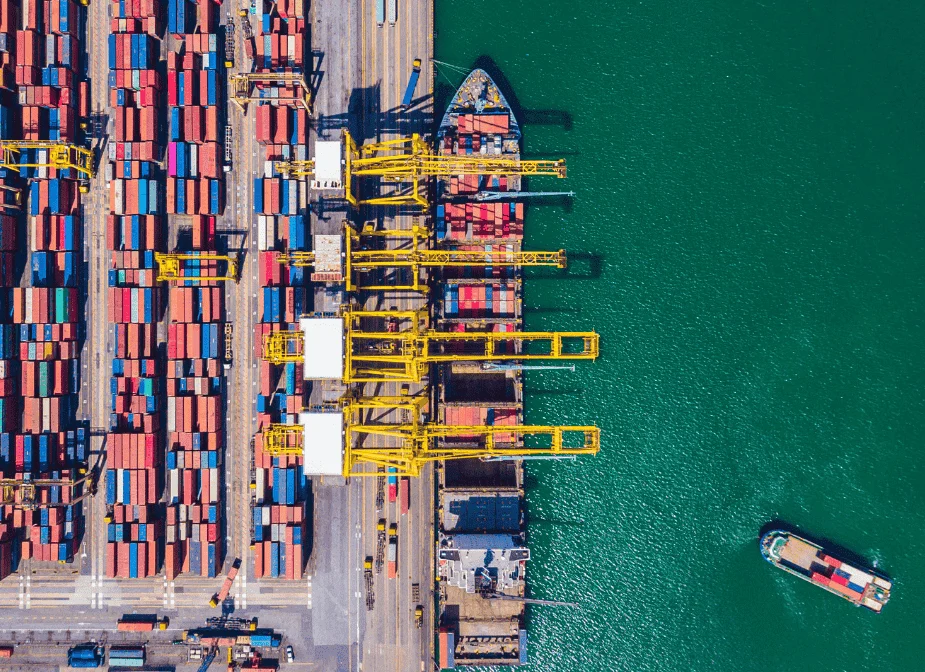
The Ultimate Guide to Nearshoring a Packaging Supply Chain
Many companies are rethinking their packaging supply chain due to rising geopolitical tensions, climate change, and the threat of global pandemics.
While offshore production has many benefits, nearshoring can mitigate disruptions, reduce import costs, and improve operational efficiency.
This definitive guide provides everything you need to know for nearshoring your packaging supply chain.
Discover actionable tips and proven strategies from our very own playbook.
Let’s get started, shall we?
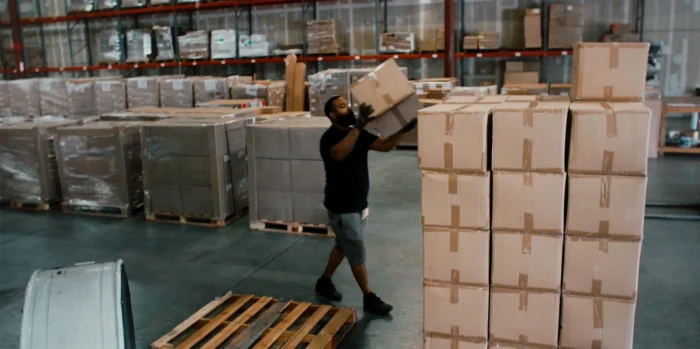
How to Find the Best Packaging Suppliers in North America
This process can be challenging and time-consuming. Building new business relationships always requires a degree of patience.
The most important thing to remember is to choose the best packaging companies that align with your standards and sustainability goals.
Here’s how you find them.
Do Your Research
New territory means learning the landscape. It all starts with doing your homework.
Follow these steps to create a shortlist of packaging suppliers.
- Define Your Needs: Determine the specific materials, quality standards, and sustainable requirements for your custom packaging.
- Use Online Directories: Search for packaging suppliers in online directories from Mexico, Canada, or the U.S.
- Interview Packaging Suppliers: Ensure they can meet your needs regarding timeline, factory locations, sustainability, and production capabilities.
- Leverage Industry Associations: Use resources and networks from industry associations to find and vet reputable packaging suppliers.
Evaluate Capabilities and Quality
It’s essential to conduct on-site visits and request samples.
This hands-on approach will provide insight into their production capacity, lead times, and level of quality control.
Ensure they have the required certifications awarded by international organizations like National Quality Assurance (NQA).
Read reviews and ask for references for an unbiased account of their service quality.
Foster Long-term Partnerships

Once you find the best packaging supplier suited to your needs, begin building a long-term partnership with them.
Partnering long-term often leads to better pricing, consistent quality, and faster communication.
It can also provide opportunities for collaborative innovation for custom packaging products, lean and green manufacturing, and logistics processes.
This could result in new packaging solutions that enhance:
- Product display
- Unboxing experience
- Innovative materials
- Sustainability
- Supply chain efficiency
Optimize Your Domestic Packaging Supply Chain
With your packaging supplier secured, it’s time to build your new supply chain.
Make your logistics operations more resilient, efficient, and compliant with these strategies.
Build a Resilient Packaging Supply Chain
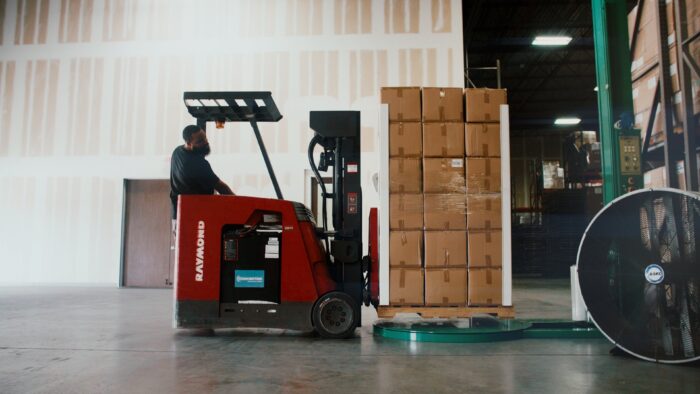
Diversify your supplier network to make your supply chain more resilient, or partner with a packaging company with an established network.
Like the stock market, you don’t want to put all your eggs in one basket.
This strategy ensures you have multiple sources for packaging materials and helps avoid supply chain disruptions.
Most importantly, the resiliency of your packaging supply chain will depend on your ability to adapt to new challenges.
This is where technology can play a crucial role.
Leveraging historical data and predictive analytics enables you to identify potential issues early and adjust your packaging supply chain accordingly.
Improve Your Supply Chain’s Efficiency
Advanced tracking systems and inventory management software are simple ways to make your packaging supply chain more efficient.
These technologies allow you to monitor inventory levels and shipments in real-time for forecasting and strategic planning.
Using a third-party logistics (3PL) provider can also streamline storage and inventory flow.
3PL helps reduce the burden on your internal resources and enhances flexibility.
Negotiate bulk purchasing with your packaging supplier to lower unit costs and improve economies of scale.
Navigate Regulatory Compliance
The regulatory landscape is constantly changing.
Failure to comply with newly enacted laws can cause disruptions in your packaging supply chain.
Stay informed by subscribing to industry newsletters and joining relevant associations.
Compliance procedures must be clear, and your team must be trained to follow them diligently.
Conduct regular checks to enhance quality control and avoid disruptions.
Consult with legal experts specializing in trade laws within North American regions for complex regulatory landscapes.
Enhance Sustainability With Nearshore Packaging Suppliers
Nearshoring your packaging supply chain reduces your carbon footprint automatically.
The shorter distances between the point of origin and the final destination require less fuel consumption and/or allow for alternative modes of transportation.
But how else can you enhance the sustainability of your packaging supply chain?
As a leader in sustainable packaging, we’ve curated our top strategies to help you meet your sustainability goals.
Emphasize Sustainable Packaging Materials & Production Practices
Many believe sustainable packaging materials have lower quality than traditional packaging. This myth simply isn’t true.
Sustainable materials are just as durable as traditional packaging. Here are some premium materials you can source from nearshore suppliers.
Examples:
- Recycled Paper
- BDP®-treated Plastics
- Recycled Poly
- Organic Cotton
- Ocean Waste Plastic (OWP)
- Non-woven Polypropylene (NWPP)
- Sugarcane (Bagasse)

Search for packaging factories with certifications, such as the Forest Stewardship Council (FSC) for paper products, Cradle to Cradle for other materials, and ISO 14001 for environmental management.
These certifications serve as verified indicators of quality and sustainability.
Seek out reports and evaluate their use of renewable energy, waste reduction methods, and overall environmental impact.
This strategic approach ensures your custom packaging aligns with your sustainability goals and resonates with eco-conscious consumers.
Use Green Logistics for Distribution
Partner with carriers who use technology to optimize delivery routes and employ energy-efficient vehicles.
DHL has integrated electric vehicles into its fleet and optimized delivery routes to reduce CO2 emissions.
Similarly, UPS uses alternative fuel vehicles and advanced route planning to enhance sustainability.
Another strategy is to consolidate shipments to reduce transportation costs.
Establishing regional distribution centers enables faster delivery times throughout your supply chain.“Return logistics” can also be an effective strategy for lowering carbon emissions.
This involves developing systems for recycling and reusing packaging materials to reduce waste and promote sustainability.
The Benefits of Nearshoring Your Packaging Supply Chain
Nearshoring presents a strategic shift that could redefine how your business navigates logistical challenges.
This approach can transform your supply chain into a more efficient and highly responsive system.
Let’s explore why nearshoring could unlock operational excellence and opportunities for business growth.
Supply Chain Consistency
Trade tariffs, extreme weather, and port congestion are just a few of the key factors influencing shipping costs from overseas packaging suppliers.
The logistics process with nearshore suppliers involves fewer moving parts and provides a more consistent supply chain.
The shorter distances, lower fuel consumption, and free trade agreements enable you to build a smooth-flowing supply chain with potential cost savings.
Reduced Import Costs
The United States-Mexico-Canada Agreement (USMCA) provides duty-free benefits for goods traded between three countries: the United States, Canada, and Mexico.
It also simplifies rules of origin related to the regional value content (RVC) of products.
The RVC for non-textile goods is 60% or higher for the transaction value method or 50% or higher for the net cost method.
For example, the transaction value method requires your packaging to consist of 60% or more materials sourced from the U.S., Mexico, or Canada.
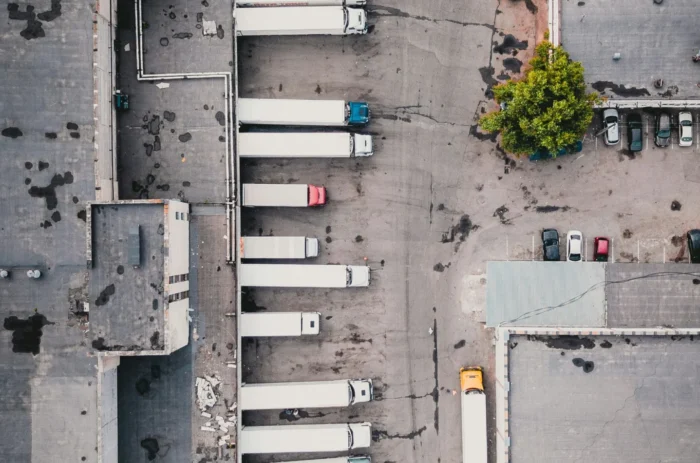
Shorter Lead Times
Shipping your custom packaging from overseas can take 6 weeks or more, depending on the point of origin.
With a nearshore packaging supplier, this transit time is reduced to just 1 to 2 weeks.
Let’s look at an example to illustrate.
A full truckload (FTL) originating in Mexico would only take 2-3 business days to reach CRP’s packaging warehouse in Houston, TX.
From there, CRP’s warehousing and distribution services provide ground shipping to most major U.S. cities within 2-4 business days.
Higher Quality Control
Close proximity to packaging manufacturers allows for easier on-site visits and stricter quality control measures.
The latter is another key component of the USMCA.
The agreement strives for more regulatory alignment between the U.S., Mexico, and Canada to help maintain high-quality standards.
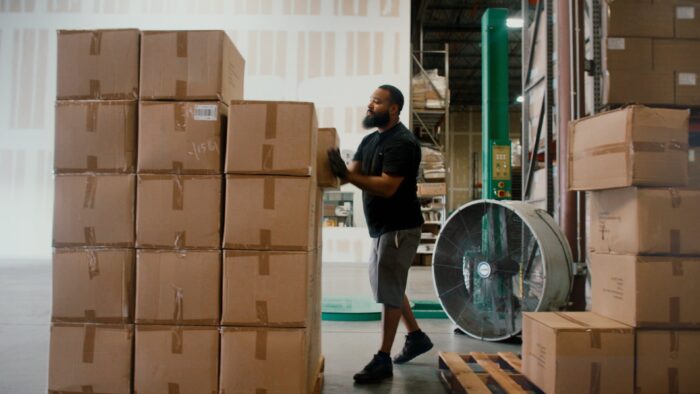
Easier Communication
Manufacturing your custom packaging with nearshore producers improves communication between parties.
Better communication leads to faster conflict resolution, fosters innovation, and increases efficiency.
It also makes coordinating changes to packaging design or production schedules easier.
This is essential for companies with seasonal products or holiday-themed packaging.
Support for Local Economies
Nearshoring your packaging supply chain creates more North American jobs and supports local businesses within the packaging industry.
For example, the American Forest & Paper Association reports that the US paper and wood products industry employs 925,000 people.
With recycled paper becoming a core packaging material, partnering with nearshore manufacturers can contribute to this economic engine.
Higher Labor Standards
Nearshore packaging manufacturers enforce strict labor standards, promote ethical practices, and provide better working conditions.
This commitment boosts employee morale and empowers them to produce a higher-quality output.
It also appeals to ethically conscious consumers who value companies with responsible practices.
Nearshoring Challenges and Solutions
Everything in our world is a double-edged sword.
While nearshoring does provide numerous benefits, it also presents several challenges.
You must weigh the potential drawbacks against the benefits to determine if this approach fits your overall strategy.
Below are some of the main challenges you’ll face when nearshoring your packaging supply chain.
Higher Overall Costs
Packaging production costs, including labor and overhead, can be higher than in some overseas locations.
For example, US regulations require a minimum wage for employees and higher standards for clean, safe working environments.
Most packaging suppliers often pass these additional costs onto their customers to maintain profitability.
Solutions:
- Negotiate Better Terms: Do your best to negotiate favorable terms. Long-term contracts often lead to discounts and better pricing.
- Choose Cost-Effective Locations: Identify nearshore locations with favorable economic conditions. For example, Mexico offers competitive labor rates while maintaining high-quality standards.
- Leverage Automation: Find packaging suppliers with automated processes to help reduce labor costs.
Limited Production Capacity
The North American packaging industry may not have the large-scale production capacity of some overseas countries.
When offshoring began almost 50 years ago, countries like China became manufacturing powerhouses, and nearshore production dwindled.
However, investments in North American manufacturing are being made that are increasing capacity and diversity in packaging production.
Solutions:
- Leverage Advanced Machinery: Find packaging manufacturers with advanced machinery that can increase output and efficiency.
- Partnerships with Regional Co-Packers: This can help manage demand in peak seasons without significant capital investment.
- Use Flexible Manufacturing Partners: Collaborate with packaging manufacturers who can scale production up or down based on your needs.
Potential for Slower Innovation
The emergence of new technologies or materials in the North American packaging industry may be slower than in some overseas markets.
The 2023 WorldStar Awards, organized by the World Packaging Organization, featured a record 488 entries from 41 countries.
Spain ranked among the top ten nations at the event and secured 11 awards out of 228—recognized for innovation, sustainability, and quality in custom packaging.
No countries in North America were mentioned, suggesting that some nearshore producers must catch up in innovative packaging.
Solutions:
- Seek Innovative Packaging Manufacturers: Partner with manufacturers who invest in research and development for new packaging materials and technologies.
- Gain Access to Cutting-Edge Research: See if your packaging manufacturer has access to innovative solutions through partnerships with academic institutions, research centers, or startups.
- Incentivize Supplier Innovation: Offer incentives to your packaging manufacturers who bring you innovative solutions.
TIP: If these challenges are deal breakers, an overseas strategy may be better. Read our Ultimate Guide to Building an Overseas Packaging Supply Chain [coming soon] to learn more.
Nearshoring Challenges and Solutions
Seems like a lot, doesn’t it? Wouldn’t it be amazing if all this were done for you?
At CRP, that’s precisely what we offer—a done-for-you (DFY) packaging solution. Our experts coordinate every aspect of your program.
We give you access to a global network of packaging suppliers, cutting-edge technology, and innovative strategies.
Here’s how CRP helps you achieve success.
- Streamline Your Packaging Logistics: We help you increase efficiency with our advanced inventory management software and seamless logistics processes.
- Maintain Regulatory Compliance: With CRP’s expert reviews, we ensure your packaging meets all necessary regulations.
- Build Sustainability: Find the best sustainable materials to reduce environmental impact and appeal to eco-conscious consumers.
- Reduce Your Operations Costs: We help you lower operational expenses by optimizing processes, reducing waste, and negotiating better rates.
Mitigate Risk: We diversify your supplier base and monitor your packaging program to ensure smooth operations.
Build a Diversified and Resilient Supply Chain With CRP
With over 40 years of experience, we have become experts in nearshoring packaging production. Contact us today to explore solutions.
FAQs for Nearshoring Packaging Supply Chains
What is nearshoring in the context of packaging supply chains?
Nearshoring involves moving your packaging production and distribution closer to your home market.
What are the primary benefits of nearshoring a packaging supply chain?
- Reduced lead times
- Lower transportation costs
- Improved communication and collaboration
- Increased supply chain reliability
- Enhanced quality control
- Greater flexibility and responsiveness
- Simplified regulatory compliance
- Strengthened regional economic ties
How does nearshoring improve supply chain resilience?
- Shorter supply chains
- Faster response to disruptions
- Greater control over production processes
- Reduced risk of geopolitical issues
- Fewer disruptions due to extreme weather conditions
What cost savings can be achieved through nearshoring?
- Lower transportation costs
- Reduced tariffs and import duties
- Decreased inventory carrying costs
- Fewer delays and disruptions
- Lower labor costs in certain regions
- Reduced costs of quality control and compliance
- Savings on warehousing and storage
- Minimized currency exchange risks
What challenges might companies face when nearshoring packaging production?
- Higher labor costs compared to offshoring
- Infrastructure limitations
- Initial setup and transition costs
- Lack of innovation
- Risk of over-reliance on regional suppliers
How can CRP mitigate the risks associated with nearshoring?
- Provide expert guidance on navigating regulatory and compliance differences
- Use a diverse network of reliable regional suppliers
- Implement robust quality control processes
- Offer comprehensive supply chain management services
- Facilitate effective communication and collaboration across all stakeholders
- Conduct thorough risk assessments and contingency planning
- Identify investment opportunities in local infrastructure and skilled labor development
- Continuously monitor and adapt to market and environmental changes
What role does sustainability play in nearshoring a packaging supply chain?
- Reduces carbon footprint by minimizing transportation distances
- Promotes the use of locally sourced, eco-friendly materials
- Supports local economies and sustainable practices
- Facilitates better waste management and recycling initiatives
- Increases transparency in sustainability efforts
- Aligns with consumer demand for environmentally responsible products
How does nearshoring impact regulatory compliance?
- Simplifies adherence to regional regulations
- Facilitates faster adaptation to changing compliance requirements
- Enhances oversight and enforcement of standards
- Reduces complexity of international trade laws
- Promotes alignment with local environmental and safety regulations
- Improves traceability and accountability in your supply chain